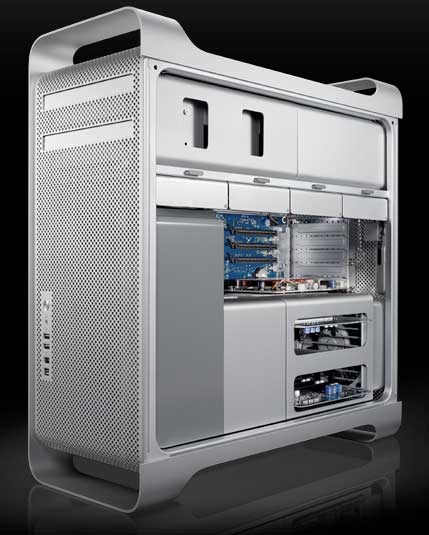
- #APPLE MAC PRO COMPUTER A1186 EMC 2113 FOR FREE#
- #APPLE MAC PRO COMPUTER A1186 EMC 2113 HOW TO#
- #APPLE MAC PRO COMPUTER A1186 EMC 2113 INSTALL#
- #APPLE MAC PRO COMPUTER A1186 EMC 2113 UPGRADE#
- #APPLE MAC PRO COMPUTER A1186 EMC 2113 ANDROID#
In business, we choose the computer we're using based on our expected workload over the next 2-3 years. If you're doing animation for a big-budget blockbuster movie, a MacBook Air or a Microsoft Surface would simply melt under the load. If you're traveling all the time and you want to be able to write and respond to email, a tablet or a small MacBook Air-sized machine is fine. When buying a computer for business use, perhaps the single most important factor is understanding the intended workload. Fast forward six years, and a huge portion of my workload involves video editing and 3D modeling. Many consumers who need mostly to communicate and consume data have moved off traditional desktops and laptops to smartphones and tablets.īut even as the needs of many consumers have been met by simpler-to-use mobile-centric devices, the needs of workers and professionals have continued to grow.Īs recently as 2013, I said I didn't need the then-Mac Pro, because I didn't see myself needing to do video editing or 3D modeling, two tasks that require a lot of computing resources. But desktop and workstation computing? That's definitely the domain of Macs.Īs we all know, the desktop computing market has changed considerably in the past decade. Now, the fact is (with a few limited exceptions), no one is going to run a Facebook-scale server farm on Macs, not even Apple. Linux (and, to some extent, BSD), Windows, and MacOS are platforms, and they support general purpose computing, ranging from running little point-of-purpose Raspberry Pi servers up to all our desktops and laptops, up through the giant server farms at Google, Amazon, and Facebook.
#APPLE MAC PRO COMPUTER A1186 EMC 2113 ANDROID#
iOS and Android are platforms, and they support (more with Android, of course) a variety of mobile solutions.

It's a hardware/software environment that we build solutions on top of. Here's why.Įveryone reading ZDNet clearly understands the concept of a computing platform.
#APPLE MAC PRO COMPUTER A1186 EMC 2113 FOR FREE#

Ukrainian developers share stories from the war zone The best Wi-Fi router for your home office os-x-10-11-el-capitan-installer-drive.3G shutdown is underway: Check your devices now
#APPLE MAC PRO COMPUTER A1186 EMC 2113 HOW TO#
Here's how to create a bootable drive with El Capitan.apparently There may be other ways to do it, too.but without a pre-existing recovery partition or time machine backup and a hard drive that needs to be formattted. About the only way I know how to format the hard drive beforehand would be to use the tools in the OS X installation, at the top of the screen. you're sure the hard drive is good, it's in the sled okay and it's inserted all the way in, right? Of course. Your Mac pro should be able to run El Capitan okay, depending on its specs, of course. As for creating a boot drive from a USB stick, I've never done it before, personally, but DiscMakerX sorta comes to mind, but you do need a copy of something to make a boot disk from.
#APPLE MAC PRO COMPUTER A1186 EMC 2113 INSTALL#
You'd have to format the hard drive beforehand, assuming that it's a good one, before you could install Snow Leopard or any OS X on it at all. Snow Leopard would be your best bet for $20. I agree with what Niel has said, basically. (I think my Mac may be able to support El Captain!).ĭoes anyone know of either a solution to create a boot drive, install a fresh OS X, or what version of OS X I need to buy the disk for? (The model # is: A1186 EMC: 2113).
#APPLE MAC PRO COMPUTER A1186 EMC 2113 UPGRADE#
Before I go and buy a disk, I want to make sure I buy a version that my Mac will boot from, and that I'll be able to upgrade from it at no additional charge. I believe that I have to purchase a install disk of OS X since Apple has made it impossible to create a USB boot disk without already owning another Mac. I gave also tried booting up with the various key commands (cmd+r, c, etc) and they have all resulted in the same flashing folder screen. I also noticed that the same thing happens when I boot up the Mac with no hard drive at all. Through my research, little to my surprise, I found that this means the boot media could not be found. However, when I boot up the computer, I get over a minute of gray screen until it shows a blinking folder icon with a question mark.

Thinking I could just put a fresh one in and load the operating system, I dug through my parts. After a little work, I have gotten the hardware fully working, but don't have the original hard drive. I recently acquired a beaten-up Mac Pro from 2008 and decided to make it my project PC.


 0 kommentar(er)
0 kommentar(er)
